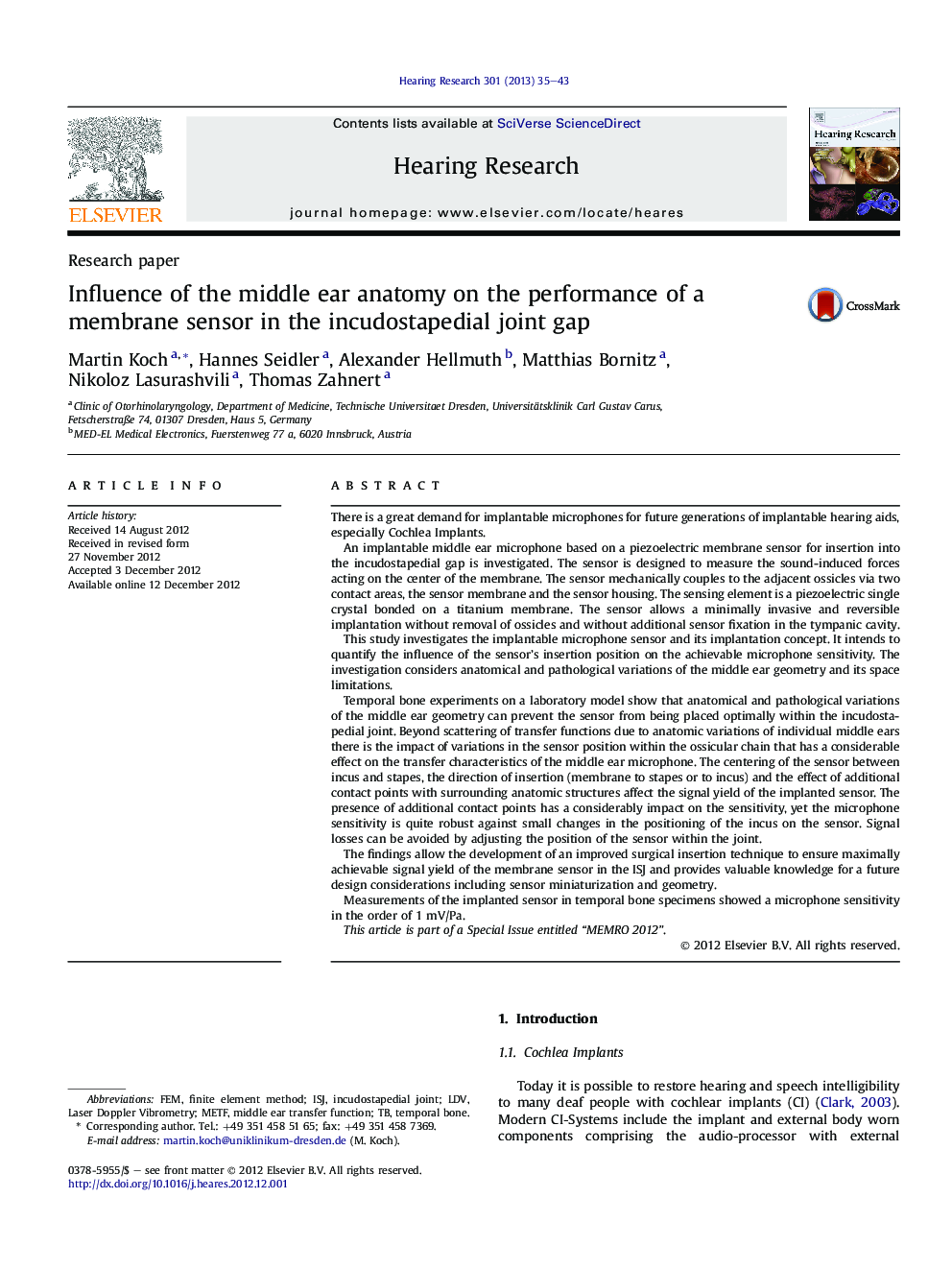| کد مقاله | کد نشریه | سال انتشار | مقاله انگلیسی | نسخه تمام متن |
|---|---|---|---|---|
| 4355202 | 1615599 | 2013 | 9 صفحه PDF | دانلود رایگان |

There is a great demand for implantable microphones for future generations of implantable hearing aids, especially Cochlea Implants.An implantable middle ear microphone based on a piezoelectric membrane sensor for insertion into the incudostapedial gap is investigated. The sensor is designed to measure the sound-induced forces acting on the center of the membrane. The sensor mechanically couples to the adjacent ossicles via two contact areas, the sensor membrane and the sensor housing. The sensing element is a piezoelectric single crystal bonded on a titanium membrane. The sensor allows a minimally invasive and reversible implantation without removal of ossicles and without additional sensor fixation in the tympanic cavity.This study investigates the implantable microphone sensor and its implantation concept. It intends to quantify the influence of the sensor's insertion position on the achievable microphone sensitivity. The investigation considers anatomical and pathological variations of the middle ear geometry and its space limitations.Temporal bone experiments on a laboratory model show that anatomical and pathological variations of the middle ear geometry can prevent the sensor from being placed optimally within the incudostapedial joint. Beyond scattering of transfer functions due to anatomic variations of individual middle ears there is the impact of variations in the sensor position within the ossicular chain that has a considerable effect on the transfer characteristics of the middle ear microphone. The centering of the sensor between incus and stapes, the direction of insertion (membrane to stapes or to incus) and the effect of additional contact points with surrounding anatomic structures affect the signal yield of the implanted sensor. The presence of additional contact points has a considerably impact on the sensitivity, yet the microphone sensitivity is quite robust against small changes in the positioning of the incus on the sensor. Signal losses can be avoided by adjusting the position of the sensor within the joint.The findings allow the development of an improved surgical insertion technique to ensure maximally achievable signal yield of the membrane sensor in the ISJ and provides valuable knowledge for a future design considerations including sensor miniaturization and geometry.Measurements of the implanted sensor in temporal bone specimens showed a microphone sensitivity in the order of 1 mV/Pa.This article is part of a Special Issue entitled “MEMRO 2012”.
Figure optionsDownload high-quality image (83 K)Download as PowerPoint slideHighlights
► A piezoelectric unimorph membrane sensor in the ISJ is examined.
► Additional coupling points to ossicles cause significant signal loss.
► Additional coupling point to promontory cause significant signal gain.
► Sensor sensitivity is robust against sensor in-plane deviations up to 0.5 mm.
► Flipped sensor position with membrane pointing to stapes is not adviced.
Journal: Hearing Research - Volume 301, July 2013, Pages 35–43